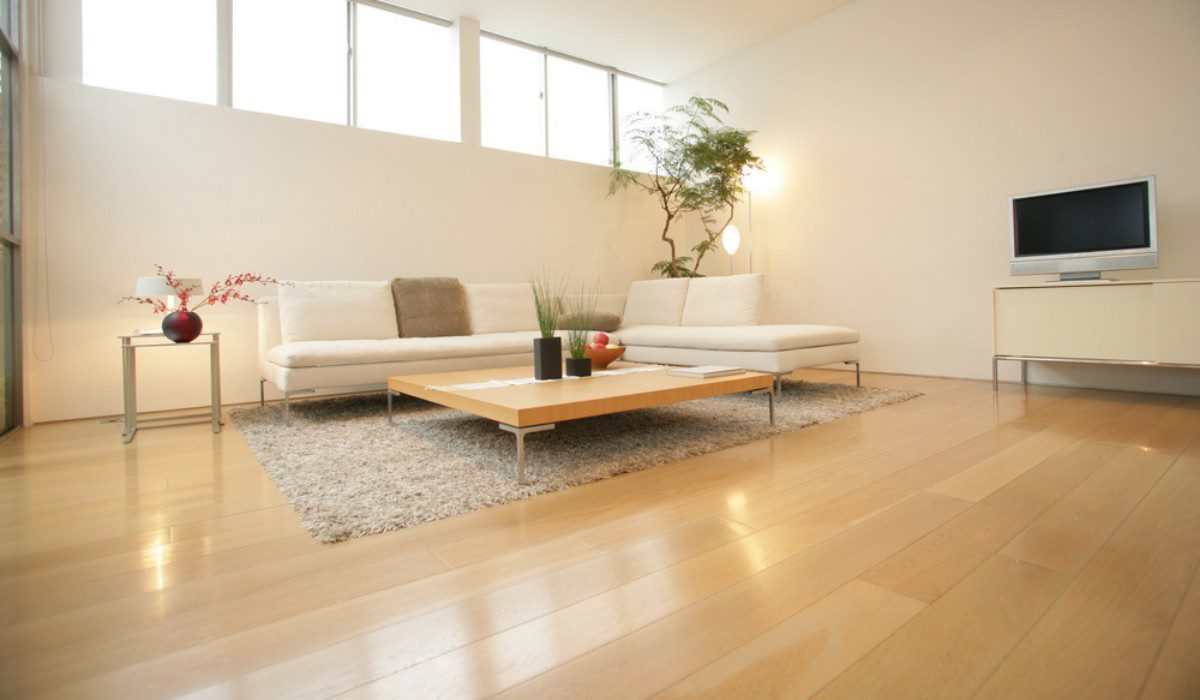Are you thinking of putting hardwood floors in your house but are hindered by its expensive cost? Or are you not sure if you will be able to maintain hardwood floors? Laminate wood flooring is the perfect substitute for hardwood floors. Modern methods can create detailed laminations that are extremely similar to hardwood floors. Moreover, it is best suited for people who are on a tight budget but desire the stylish impression of hardwood in their homes. In this article, we will explore the key features of laminate flooring, their pros and cons and tips on how to maintain it.
See also: A step-by-step guide to laminate flooring installation
Composition of laminate flooring
Laminate flooring is made of several layers combined under conditions of extreme heat and pressure. Each layer has a specific purpose to serve in ensuring functionality:
- The bottom layer is the foundation and provides support and stability.
- The core layer is a fiberboard which is very durable and offers extra protection to the bottom layer.
- The pattern/design layer decides the appearance of the floor. The texture and finish of the pattern layer give the floor a similar feel to hardwood.
- The top layer of wood laminate is the wear layer and it is made from aluminium oxide. It protects the flooring from scratches, stains, colour fading, etc. and ensures optimal durability and quality.
Laminate flooring: Key features
Laminate flooring boasts of several features that make it a popular choice among homeowners. Here’s what thai type of flooring has to offer:
Durability
Being scratch and impact resistant, laminate flooring is specially designed to withstand heavy foot traffic. It also has the ability to retain its colour and appearance over time, even with exposure to sunlight.
Variety of designs
Available in a wide range of styles and finishes, laminate flooring can realistically imitate the appearance of hardwood, stone or tile. This variety makes it compatible with most aesthetic themes and decor styles, running from rustic to modern.
Easy to install
A lot of variants come with click-lock systems that do away with the need of glue or nails, thereby making installation a breeze. They do not require any extensive surface preparation before installation as they can be easily placed over existing floors.
Water resistance
Some variants of laminate flooring are especially engineered for moisture-prone spaces like kitchens, bathrooms and basements, and are therefore water-resistant.
Comfort and safety
As it is generally installed with a foam or felt underlayment, laminate flooring remains soundly insulated and cushioned. They possess the ability to repel dust or allergens by not allowing them to get trapped and contributing to a better indoor air quality.
Environmental sustainability
Apart from being recyclable themselves, most laminate floors are composed of recycled materials. Option with low VOC emissions are also available, that ensure a healthy living environment.
Warranty and longevity
Laminate flooring is a long-term investment and can last many years with proper maintenance. Several manufacturers also offer extended warranties on laminate flooring of up to 20 years.
Pros and cons
To help you decide better if laminate flooring is right for you, here is a concise list of pros and cons you can consider:
| Pros | Cons |
| A budget-friendly option that does not compromise style and imitates the look of natural materials. | The non-water-resistant varieties are susceptible to swelling, warping and mould development if used in moisture-prone areas. |
| Specially engineered to handle heavy foot traffic and resist wear and tear without losing colour. | Damaged planks cannot be easily repaired and need to be replaced altogether; improper installation might lead to seams becoming visible with time. |
| Available in a wide range of styles, colours, patterns, textures and finishes to suit different interior decor themes. | Might not be comfortable to stand on for long periods due to hard underfoot and inability to retain heat. |
| Easy click-lock installation system; can be placed over existing floors without extensive prep work. | The printed designs might give off a repetitive and monotonous look, unlike the natural charm of hardwood or stone. |
| Stain resistant and easy to clean, requiring just sweeping and damp mopping. | Might not be of as much value as stone or hardwood flooring when it comes to resale. |
| Contains low VOCs and does not trap dust and allergens, thereby improving indoor air quality. | If not installed with proper underlayment, it might be noisier and other flooring types. |
Maintenance tips
To make the most out of your laminate floors and ensure that they last for long, it is recommended to keep in mind these tips:
- Sweep daily with a soft broom or vacuum with a hard floor attachment to keep it clean without scratching the surface, and mop using a damp cloth (excess moisture might cause swelling) with a mild soap solution or non-abrasive floor cleaner.
- Address any fresh spills promptly using a dry or damp cloth; for stubborn stains like oil, paint or tar, remove by scrubbing with acetone and wipe the area with a damp cloth.
- Prevent scratches and dents by attaching furniture pads to the bottom of furniture legs and placing mats at the entrance to reduce dirt and moisture exposure.
- Consider using a dehumidifier in high-humidity areas to maintain the levels between 30 – 50% and avoiding expansion or contraction.
- Periodically inspect for any signs of damage, such as lifting or gaps, and promptly address them as required.
- Limit exposure to sunlight as by using curtains or blinds as UV rays might cause the colour to fade.
FAQs
What is laminate flooring?
Laminate flooring is a multi-layered synthetic flooring that imitates the look of wood, stone or tile, generally made using high-density fibreboard (HDF).
Is laminate flooring suitable for bathrooms and kitchens?
While regular variants are not recommended for high-moisture areas, laminate flooring is available in water-resistant options that are suitable for spaces like kitchens and bathrooms.
How does laminate flooring compare to hardwood flooring?
Laminate flooring is more affordable and easier to install than hardwood flooring and is more resistant to scratches and dents, but does not have the longevity of hardwood flooring.
Can I install laminate flooring myself?
Many laminate flooring options come with a click-lock installation system that does not require nails or glue, making installation a breeze.
How do I maintain laminate flooring?
Regular sweeping or vacuuming with a hard floor attachment and occasional damp mopping with a mild cleaner can help maintain laminate flooring.
Can laminate flooring be installed over existing flooring?
Laminate flooring can easily be installed over existing flooring if it is clean, dry, level and structurally sound.
Is laminate flooring environmentally sustainable?
Most laminate flooring options are made from recyclable materials and are themselves recyclable. Moreover, they contain lower VOCs than other flooring types, contributing to improved indoor air quality.
| Got any questions or point of view on our article? We would love to hear from you. Write to our Editor-in-Chief Jhumur Ghosh at jhumur.ghosh1@housing.com |







